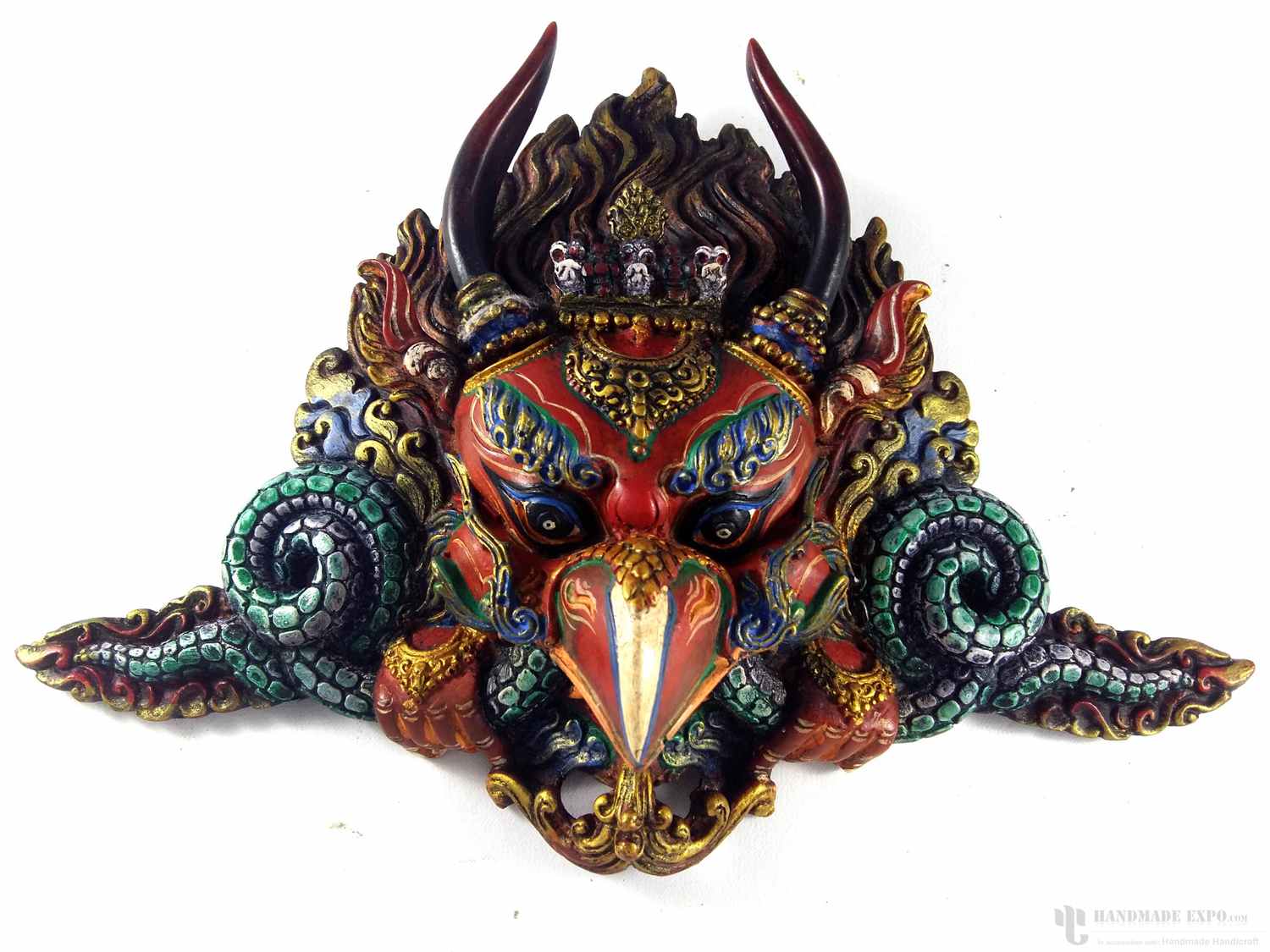
Code
HCS13076
Weight
500 gm / 1.1 lbs
Size
Height
24cm (9") Width
17cm (7") Material
Resin
Availability
Available
Date Added
2017-04-26 09:55:20
Note : We used to sell this product 8 years ago so it may no longer be in our stock.
It is possible that we still have it with our suppliers but the price could be different from before.
Feel free to order. We will verify availability and inform you promptly.
It is possible that we still have it with our suppliers but the price could be different from before.
Feel free to order. We will verify availability and inform you promptly.

Safe Payment
We accept Paypal, Money Transfer, Bank Transfer
Confidence
Protection covers your purchase and personal data.
Worldwide Delivery
We ship Worldwide, except Russia.Shipping cost US$25.2 for upto 0.5 kgs

Hotline
Talk to help line for your question on 9841267335About Color Finishing
The Resin Garuda Mask - Painted [red] is adorned with traditional colors, creating a captivating aesthetic through a combination of gold and various hues. This painting technique follows a time-honored process that aims to faithfully represent the Resin Garuda Mask - Painted [red] in accordance with traditional color descriptions. In the context of Buddhist statues, this approach holds great significance. Each statue has its own primary color, and it is crucial to depict the statue in its authentic shade. Read More . . .
The Resin Garuda Mask - Painted [red] is adorned with traditional colors, creating a captivating aesthetic through a combination of gold and various hues. This painting technique follows a time-honored process that aims to faithfully represent the Resin Garuda Mask - Painted [red] in accordance with traditional color descriptions. In the context of Buddhist statues, this approach holds great significance. Each statue has its own primary color, and it is crucial to depict the statue in its authentic shade. Read More . . .
Resin Mold : What is resin Mold
resin casting is a process utilized for the production of high-quality components using synthetic resin. This process involves the use of a liquid or solid resin.
A resin casting process involves mixing liquid synthetic resin with a curing agent. The two substances then enter a mold cavity. The resin is then hardened into rigid polymers. Read More . . .
resin casting is a process utilized for the production of high-quality components using synthetic resin. This process involves the use of a liquid or solid resin.
A resin casting process involves mixing liquid synthetic resin with a curing agent. The two substances then enter a mold cavity. The resin is then hardened into rigid polymers. Read More . . .
Brief Introduction :
The Garuda is a giant mythical bird or bird-like creature in Hindu and Buddhist mythology.
Garuda is the name for the constellation Aquila and the Brahminy kite is considered to be the contemporary representation of Garuda. In Buddhist mythology, the Garuda are enormous predatory birds with intelligence and social organization. Another name for the Garuda is supara meaning "well-winged, having good wings". Like the naga, they combine the characteristics of animals and divine beings and may be considered among the lowest devas.
Iconography :Garuda is the name for the constellation Aquila and the Brahminy kite is considered to be the contemporary representation of Garuda. In Buddhist mythology, the Garuda are enormous predatory birds with intelligence and social organization. Another name for the Garuda is supara meaning "well-winged, having good wings". Like the naga, they combine the characteristics of animals and divine beings and may be considered among the lowest devas.
There were also the four garuda-kings : Great-Power-Virtue Garuda-King, Great-Body Garuda-King, Great-Fulfillment Garuda-King, and Free-At-Will Garuda-King, each accompanied by hundreds of thousands of attendants.
The Garudas have kings and cities, and at least some of them have the magical power of changing into human form when they wish to have dealings with people. On some occasions Garuda kings have had romances with human women in this form. Their dwellings are in groves of the simbalī, or silk-cotton tree.
The Garuda are enemies to the nāga, a race of intelligent serpent- or dragon-like beings, whom they hunt. The Garudas at one time caught the nāgas by seizing them by their heads; but the nāgas learned that by swallowing large stones, they could make themselves too heavy to be carried by the Garudas, wearing them out and killing them from exhaustion. This secret was divulged to one of the Garudas by the ascetic Karambiya, who taught him how to seize a nāga by the tail and force him to vomit up his stone.
The exact size of the is uncertain, but its wings are said to have a span of many miles. This may be a poetic exaggeration, but it is also said that when a Garuda's wings flap, they create hurricane-like winds that darken the sky and blow down houses. A human being is so small compared to a Garuda that a man can hide in the plumage of one without being noticed. They are also capable of tearing up entire banyan trees from their roots and carrying them off.
Garudas are the great golden-winged Peng birds. They also have the ability to grow large or small, and to appear and disappear at will. Their wingspan is 330 yojanas (one yojana being 40 miles long). With one flap of its wings, a Peng bird dries up the waters of the sea so that it can gobble up all the exposed dragons. With another flap of its wings, it can level the mountains by moving them into the ocean.
The Garudas have kings and cities, and at least some of them have the magical power of changing into human form when they wish to have dealings with people. On some occasions Garuda kings have had romances with human women in this form. Their dwellings are in groves of the simbalī, or silk-cotton tree.
The Garuda are enemies to the nāga, a race of intelligent serpent- or dragon-like beings, whom they hunt. The Garudas at one time caught the nāgas by seizing them by their heads; but the nāgas learned that by swallowing large stones, they could make themselves too heavy to be carried by the Garudas, wearing them out and killing them from exhaustion. This secret was divulged to one of the Garudas by the ascetic Karambiya, who taught him how to seize a nāga by the tail and force him to vomit up his stone.
The exact size of the is uncertain, but its wings are said to have a span of many miles. This may be a poetic exaggeration, but it is also said that when a Garuda's wings flap, they create hurricane-like winds that darken the sky and blow down houses. A human being is so small compared to a Garuda that a man can hide in the plumage of one without being noticed. They are also capable of tearing up entire banyan trees from their roots and carrying them off.
Garudas are the great golden-winged Peng birds. They also have the ability to grow large or small, and to appear and disappear at will. Their wingspan is 330 yojanas (one yojana being 40 miles long). With one flap of its wings, a Peng bird dries up the waters of the sea so that it can gobble up all the exposed dragons. With another flap of its wings, it can level the mountains by moving them into the ocean.


![Resin Garuda Mask - Painted [red]](https://handicraftseller.com/uploads/pics/product/thumb/2017/04/13076.jpg)

 Red" title="Resin Cheppu Mask - Painted
Red" title="Resin Cheppu Mask - Painted  Lapis Blue" title="Resin Cheppu Mask -
Lapis Blue" title="Resin Cheppu Mask -
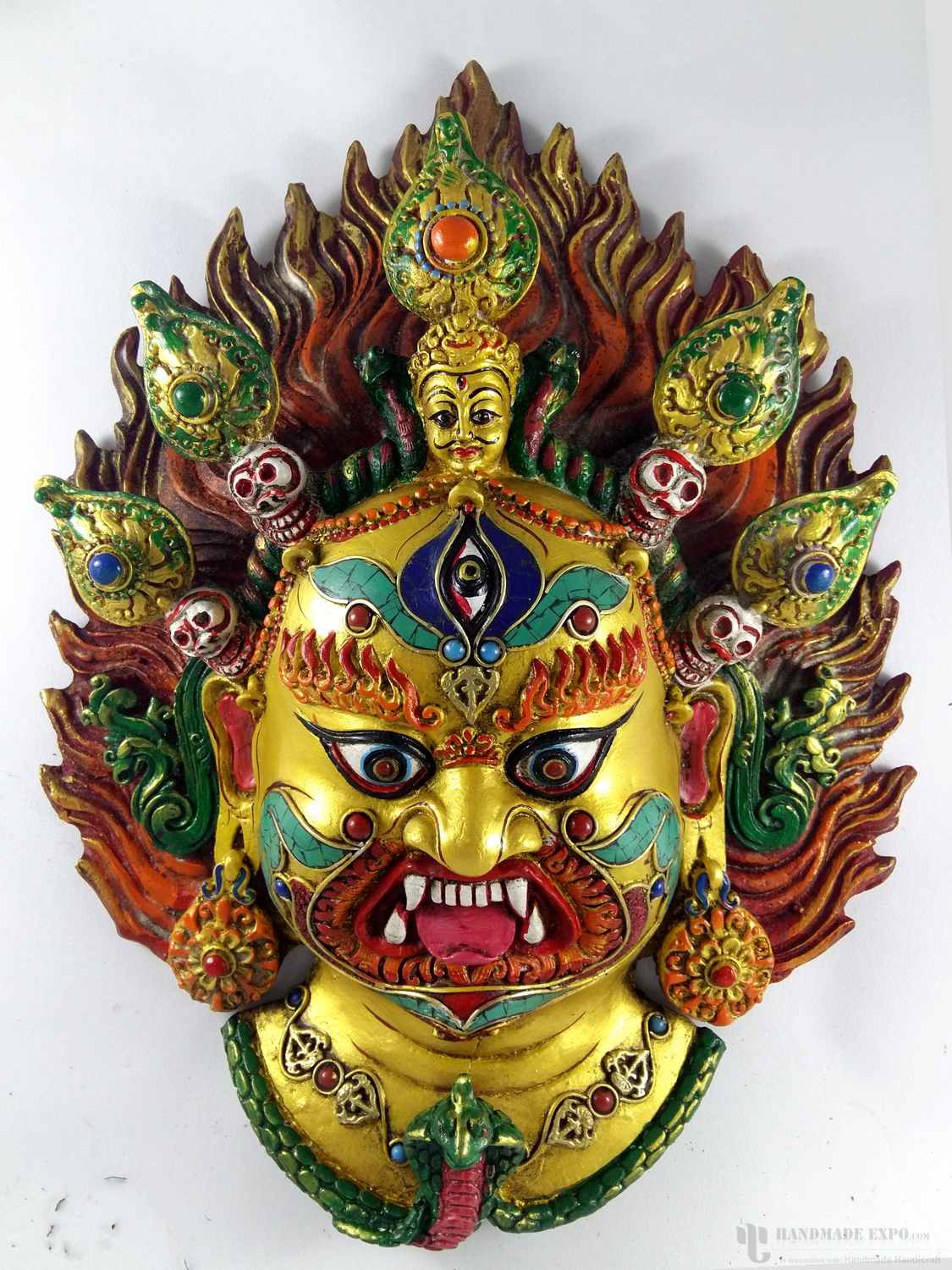
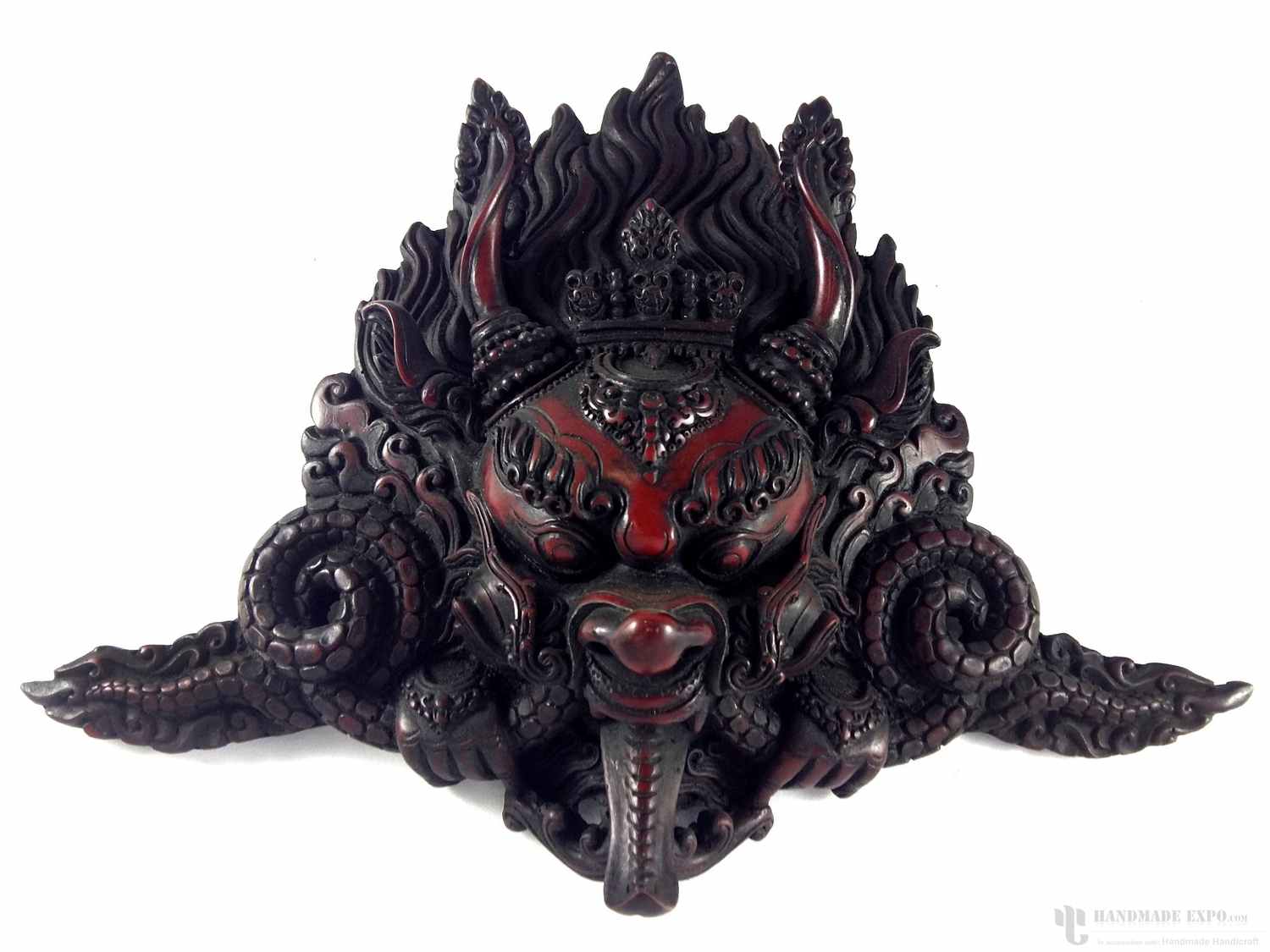 Coral Red" title="Resin Cheppu Mask
Coral Red" title="Resin Cheppu Mask  of Garuda,
of Garuda, 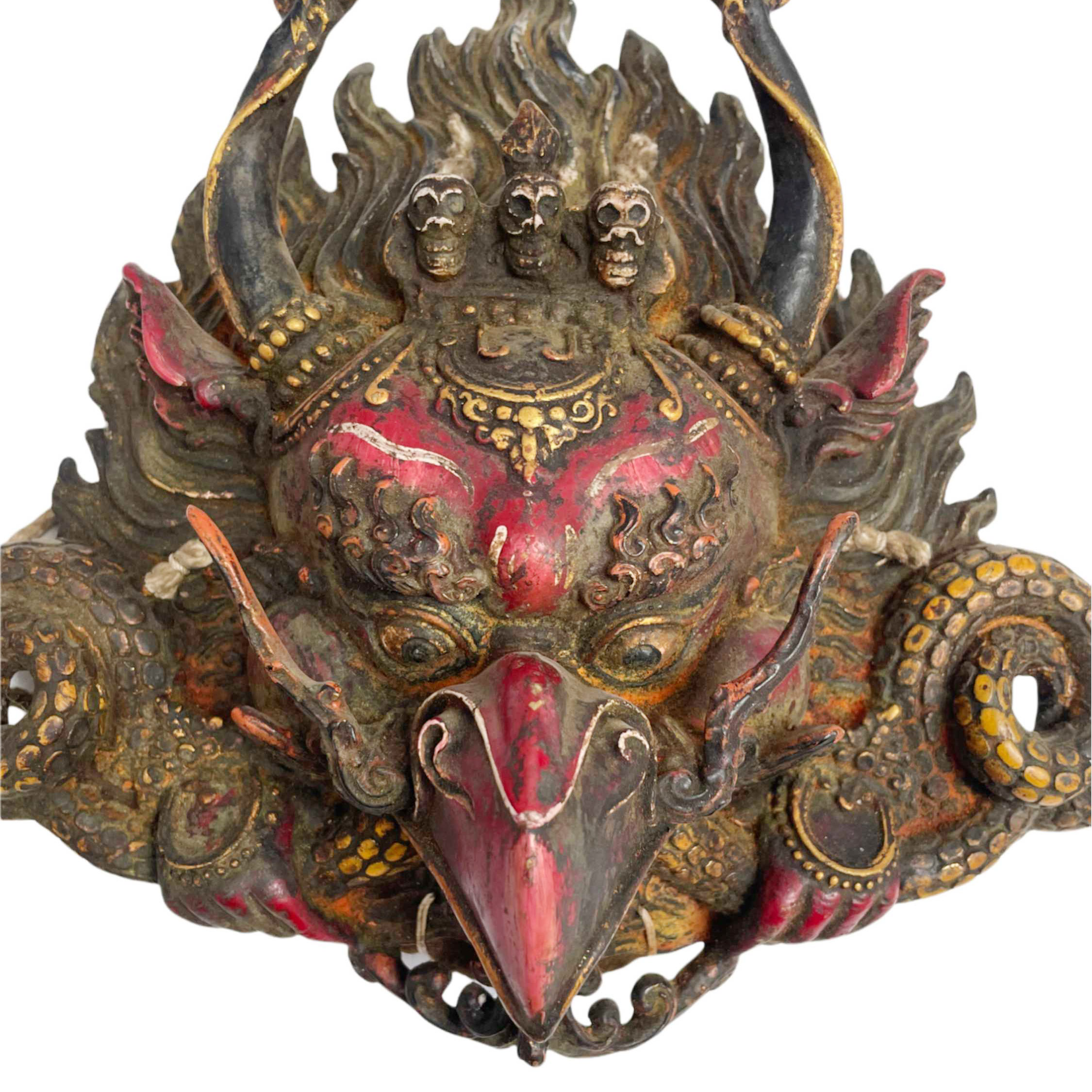 of Garuda,
of Garuda,  and
and 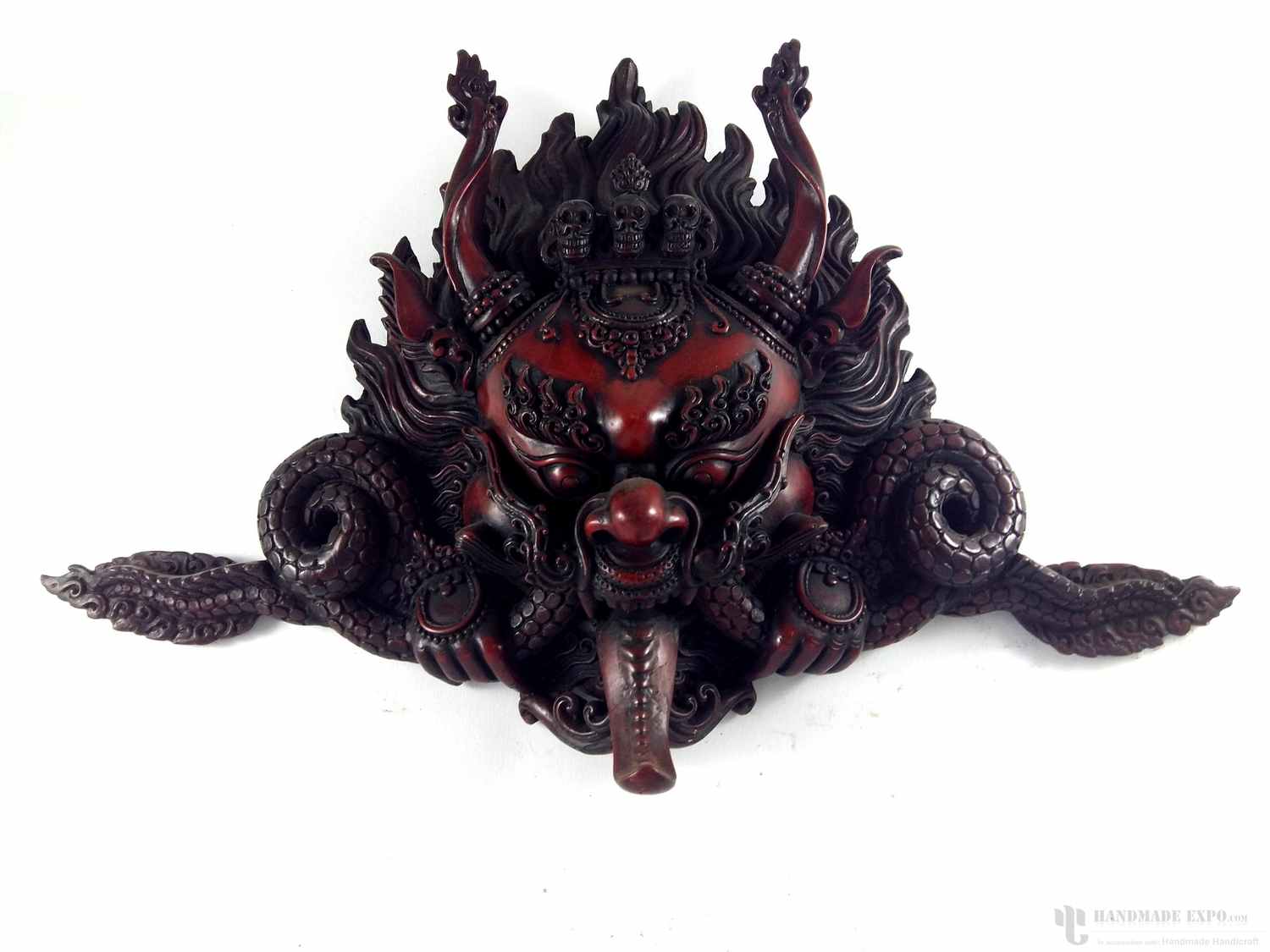 Coral E" title="Resin Cheppu Mask -
Coral E" title="Resin Cheppu Mask - White" title="Resin Garuda Mask - Painted
White" title="Resin Garuda Mask - Painted